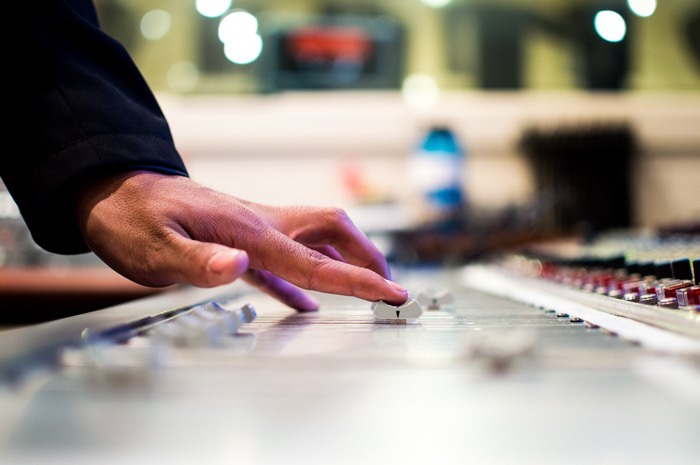Make sure your mixing environment has some proper acoustic treatment
Every room has its sound. Your speaker monitors should be placed at the center of the room, right next to a wall, with a small distance from it. The positions of the speakers and your ears should be at an equal distance and form a perfect triangle. The next thing you should do is adding some acoustic treatment to the room. There are plenty of ways to do that. Check online for more detailed acoustic treatment solutions.
Have a reference track you know pretty well
You should have several different songs that you have listened to on pretty much every playback device, and you know how it sounds in every type of environment. This will help you understand how the room that you work in sounds and should put you on the right track toward your desired mix.
Mix at low volumes
I know that you want to hear that beefy low end and sizzling highs. And that’s fine I do too. There is time for that. But in order to make quick progress, first in order is to put the right sounds at the right spots. Mixing at SPL around 79dB to 82db is more than enough. After 8 hours spent on mixing at around 82dB to 85dB our ears became useless and with every increment by 3dB, you shorten your ears’ work hours by double.
Take frequent breaks. Try not to mix for longer than 1 hour without taking a break.
Mixing is a time-consuming job. We often spend time listening to the same 3-4 minutes for hours. And guess what happens… Our ears adapt to the sounds we tend to make better. We are getting unable to hear the things we wanted to fix or change back when we started. I cannot stress enough how important is to take frequent breaks. Trust me on this; you don’t want to start all over again the next day.
Master your stock plug-ins before you invest in other brands’ software.
Every Digital Audio Workstation (DAW) platform has built-in plug-ins. Most often they are not the best but will help you understand how compression, EQ, reverb, limiter and other components (depending on the DAW) are working. Spend some time working and understand what they do and how they do it before investing in some expensive 3rd party plug-ins.
Try not to overuse EQ. Don’t go drastic if not needed
Those are the mistakes every beginner does. Often I hear tracks with ear-piercing highs and with squashed dynamics at the most complex parts of the songs. So my first advice is to find what stops the high frequencies from standing out in the mix. Most often you will find that the problem is in the low end. Maybe you should first try to decrease the low end, and if that doesn’t do the trick, then you should try to increase the top end.
Be gentle with compression
My second piece of advice is when you want to add compression to your music, always start from the loudest part of the track. Select it and play it on repeat. Start adding compression depending on the volume, speed, and complexity of that part. And once again be gentle. For the quiet parts, automatization could work just fine.
Reference mixes on multiple speaker systems as possible
You should listen to your mixes thru various playback devices. Of course, the first thing that you are going to listen thru your mixes are your monitor speakers or headphones. My advice at the beginning is to go switch frequently between them. Because those are the referent devices with the flattest frequency response and are build to pinpoint every unwanted sound. Then you should move to the consumer playback devices such as laptops, phones, earbuds, cars, etc.
If what you hear satisfies your expectations then you can try to enjoy your work on some audiophile equipment. I prefer valve amplified speakers or a good pair of planar magnetic headphones.
Take a 24-hour break then re-listen to the final mix before sending it to client
Now you are finished with your mix. You are happy how it sounds. You have listened to the same track for more than a hundred times. All you have to do now is to depart from it for 24 hours. Give your brain a chance to forget what exactly happening in the track. After 24 hours come back at it. It’s very much possible that you will need to make some final adjustments. Now you are done. Play it to everyone.
It’s not the tools that matter, it’s the engineer.
Back in the day when mixing first came up, it was referred to “balancing.” In my opinion, that is a much more appropriate term to describe our job as mixing engineers. Our job is a form of art, and our obligation is to put every sound right where it belongs.
 Guest author: Paul Schoff from SoundMaximum. An audiophile from Detroit.
Guest author: Paul Schoff from SoundMaximum. An audiophile from Detroit.
